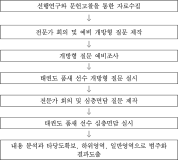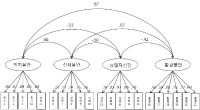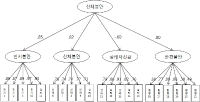PURPOSE This study aimed to examine the effects of an 8-week gluteus medius strengthening exercise on back pain, balance, and strength in female office workers with low back pain. METHODS The participants of this study were female office workers aged 30 to 48 years old who reported low back pain on a visual analogue scale (VAS) ranging from 3 to 7. Twenty-six participants were randomly assigned to the exercise (n=13) and control (n=13) groups. The study applied a gluteus medius strengthening program to the exercise group for 8 weeks, three times a week, and 60 minutes per session. The participants in the control group were asked to maintain their normal life patterns during the period of intervention. Data collected from the test were analyzed through repeated two-way ANOVA, paired t-test, and independent t-test. RESULTS First, there has been a significant decrease in the pain level, as evidenced by VAS and Korean oswestry disability index (KODI) scores. Second, there was a statistically significant improvement in both static and dynamic balance capabilities. Last, back strength also significantly improved. CONCLUSIONS Application of the gluteus medius strengthening exercise appears to be effective for low back pain, static and dynamic balance capabilities, and back strength.

The purpose of this study was to develop and validity Competitive State Anxiety Scale for Taekwondo Form athlete(CSATF). The participants were composed of the 48 Taekwondo Form athlete to explore sub-factors of Competitive State Anxiety for Taekwondo Form athlete. The data were collected by an open-ended questionnaire and interview. The participants were composed of 257 national Taekwondo Form athlete to develop Competitive State Anxiety Scale for Taekwondo Form athlete. This 157 athlete data were used for items analysis, reliability analysis and exploratory factor analysis. And 100 athlete data were utilized for confirmatory analysis. Also convergent validity, discriminant validity, predictive validity latent mean analysis of CSATF were performed The results of this study were as follows. Firstly, the results revealed that the four general dimensions were identified such as cognitive anxiety, somatic anxiety, state of confidence, environmental anxiety. Secondly, CSATF comprised cognitive anxiety(5 item), somatic anxiety(5 item), state of confidence(5 item) and environmental anxiety(6 item). Thirdly, convergent validity, discriminant validity and predictive validity, the multi-group analysis according to gender examined validity of CSATF.



